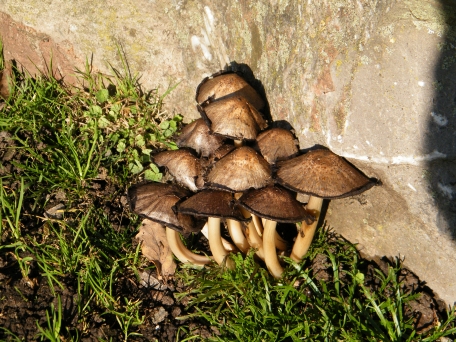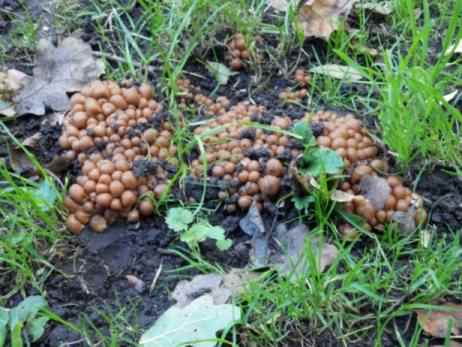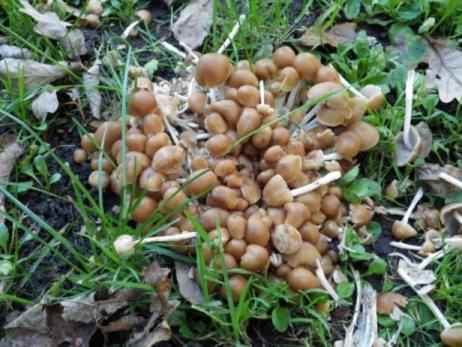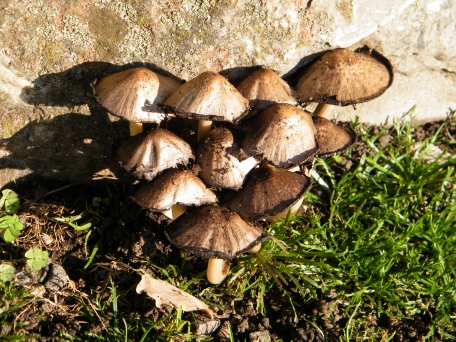
Click photo for a larger image

More photos
Click photo for a larger image
Common Inkcap - Coprinopsis atramentaria
Formerly - Coprinus atramentarius
Family - Psathyrellaceae
Also known as - Tipplers Bane, Inky Cap
This fungus is poisonous
Medium sized fungi growing after rain from the spring to autumn generally in small groups but occasionally as solitary specimens, on waste ground, in gardens, near tree stumps or buried wood of decaying broad leaved trees, lawns, as well as grassy areas. It is a widespread and common saprobic fungus throughout the northern hemisphere in Europe, North America, Asia, also found in Australia. Initially conical the caps are 2–8cm (0.75–3in) across, stipes 7–14cm (2.75–5.5in) tall, 1–1.5cm (0.5–0.75in) diameter, initially light brown to honey brown darker towards the centre, becoming bell shaped and flattening with age.
Decomposes to a black inky mess shedding spores in the process. No distinctive smell or taste except in the later stages of decomposition when it becomes quite foul. Common, appearing early summer to autumn. The black liquid that this mushroom releases after being picked was once used as ink. A similar species Coprinellus micaceus occurs in similar habitats but is smaller and redder and when young has mica–like veil fragments on the surface of the cap.
BCP do not advise or recommend that Common Inkcap – Coprinopsis atramentaria is eaten or used as an herbal remedy. Common Inkcap is poisonous when consumed in conjunction with alcohol, and the effects can be severe. If reacts chemically with alcohol to produce nausea, the drug "Antabuse" is derived from it.
 Photos ©2002– |
 Click three photos above for a larger image |
 |
 |
Site design ©1999– Brickfields Country Park - Privacy -